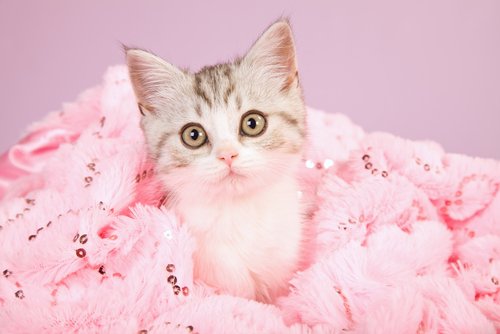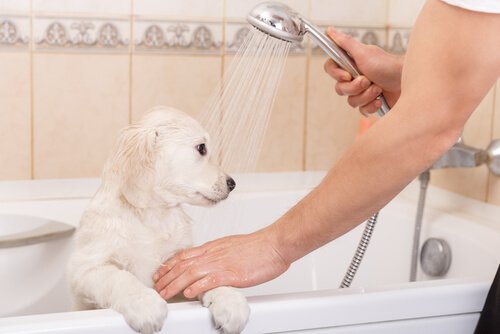Why Shouldn't You Dye Your Pet's Fur?

A few years ago, ostentation arrived in the world of pets. In fact, these days you can buy just about anything for them. Clothes, necklaces, sunglasses, and even diamonds are all in fashion in the animal world. However, a newer trend that is somewhat harmful is also becoming popular: the tendency to dye your pet’s fur.
Many people might say that if dyeing your hair is harmful to humans, why wouldn’t it be even more so to animals? Well, there are certain differences in that regard. However, in this article, you will find some good reasons why you shouldn’t dye your pet’s fur.
Reasons not to dye your pet’s fur

As much as you might want to humanize your pets, there are some things that you shouldn’t do. Dyeing your animal’s fur can cause the following problems:
Stress
Even just the process of washing, dyeing and drying will take longer than an hour and a half. Having something in the animal’s hair can make it feel impotent. And of course, just the process itself can be unpleasant and stressful.
Do you really want to give your pet a hard time without it being absolutely necessary? Something to think about…
Allergies
Although there are special dyes for pets and a good professional will know how to dye your pet’s fur, some of these pet dyes can cause allergies. This is more common than you might think.
The same as with humans – even though the dyes we use are generally fine for us, some dyes still contain allergens that can make some people sick. The same thing can happen with animals.
Therefore, if your pet’s skin is a little sensitive, or if it’s still very young, then it’s better to avoid giving it a tough time that could also provoke swelling, itchiness, and rashes.
Poisoning
Although there are specific dyes for animals, these contain chemicals that could poison your pet. Will you really be able to stop your dog from licking the dyed part of its fur? Just imagine the damage it could cause your dog if it were to swallow even just a little bit of these chemical components!
If you don’t want to run these risks, it would be better to give up on the idea of dyeing your pet’s fur.
Masks your pet’s smell
Dogs have a certain smell that is very important in all aspects of their life. A chemical dye will just camouflage that smell and will make good relationships with other dogs more difficult.
In the same way that people’s hair forms part of their personality, the same is true in the case of your pet. With that in mind, let your animal have its own identity, without anything artificial.
How to dye your pet’s fur safely
If, after considering all of the above information, you are still convinced that you want to dye your pet’s fur, make sure you can do it safely.
Experts recommend using food dyes, since these won’t harm your pet if it happens to try to lick itself, or if the dye comes into contact with your pet’s skin.
You’ll have to mix the product with water at room temperature, never with hot or very cold water.

Okay, so as well as being safe, you want your animal to look pretty, right? Make sure that all the parts of the fur that you want to dye are wet. To help with this job, you can use a comb to disperse the product through the fur.
Remember that we’re talking here about food dyes. Under no circumstances should you try to dye your animal with dyes designed for human hair or with any other product that’s not specially designed for pets.
So, will you dye your pet’s fur?
We know that you’d like to dye your pet’s fur so that it can be fashionable along with you. However, you shouldn’t forget that the safety and well-being of your furry friend should always come first in any decision regarding their welfare.
With that in mind, you should think about the above risks of dyeing your pet’s fur. Remember that you should take into account your pet’s feelings, health and what’s best for them.